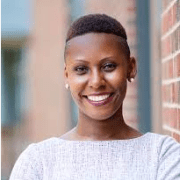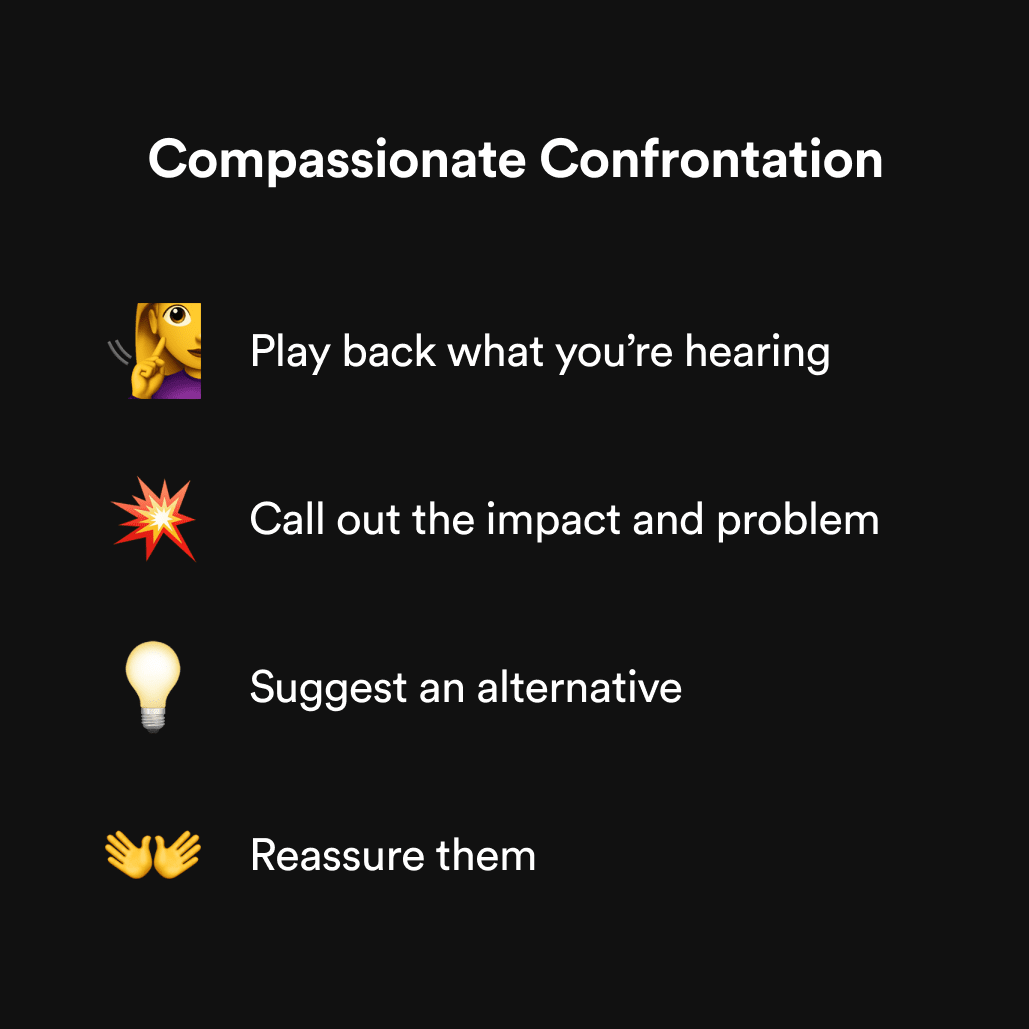Correcting Non-Inclusive Language
Recognize and flag language that excludes people in your team.

Inspired by:
Robin Wright-Pierce, Diversity Coach and Senior Social Equity Specialist at Design Impact

🗯 Correcting Non-Inclusive Language
Hey, you guys. Let's have a quick discussion about what's on the roadmap.
Did you notice the non-inclusive language? It's so commonplace, most people don't! Addressing these patterns can be challenging, but intentionally using inclusive language creates a safer environment for everyone.
Here's a way to address the issue and set a good example for your team.
☝️ Play back what you're hearing
When you notice something inappropriate, take a moment to raise a flag in private and confirm that you understood the comment correctly.
You can say something like:
I noticed that in our team meeting yesterday you kept addressing the group using 'you guys,' did you notice?
💥 Call out the impact and problem
They probably didn't even realize what they said, and they might need some context to understand why you're bringing it up. Once you’ve clarified their intention, focus on the impact of the comment and why it’s problematic:
Some people might not feel included in the group when they're referred to as 'guys.'
💡 Suggest an alternative
Help the other person understand what a better word choice would be:
We want to make this an inclusive environment, so we'd like to use alternatives like 'everyone,' or 'hey all.'
Pro-tip: If you're using Slack you can create a custom response that will have Slackbot say:
Hey! Instead of using 'guys,' why not 'everyone' or 'all'?
👐 Reassure them
After explaining the issue, the impact, and an alternative, follow up with reassurance to help them do better in the future.
I know that you're not going to take this lightly, so don't beat yourself up about it. It took me a few weeks of practice to change my habit, but everyone on the team will appreciate the effort.
🕵️ Have you spotted these?
More inclusive: They/them Instead of: He/him (when describing a typical person)
More inclusive: Women Instead of: Girls (when referring to adults)
More inclusive: Typical Instead of: Normal (Can stigmatize people who are different and imply they are abnormal.)
More inclusive: Marginalized or underrepresented groups Instead of: Minorities (Not all marginalized groups are minorities)
🌈 Stay strong
Bringing attention to someone's comment may cause a defensive reaction at first. Expect it, but stay focused on the actions, the impact, and a better alternative.
That way, you can guide them towards conscious and lasting change.

Become a world-class leader in two minutes a day